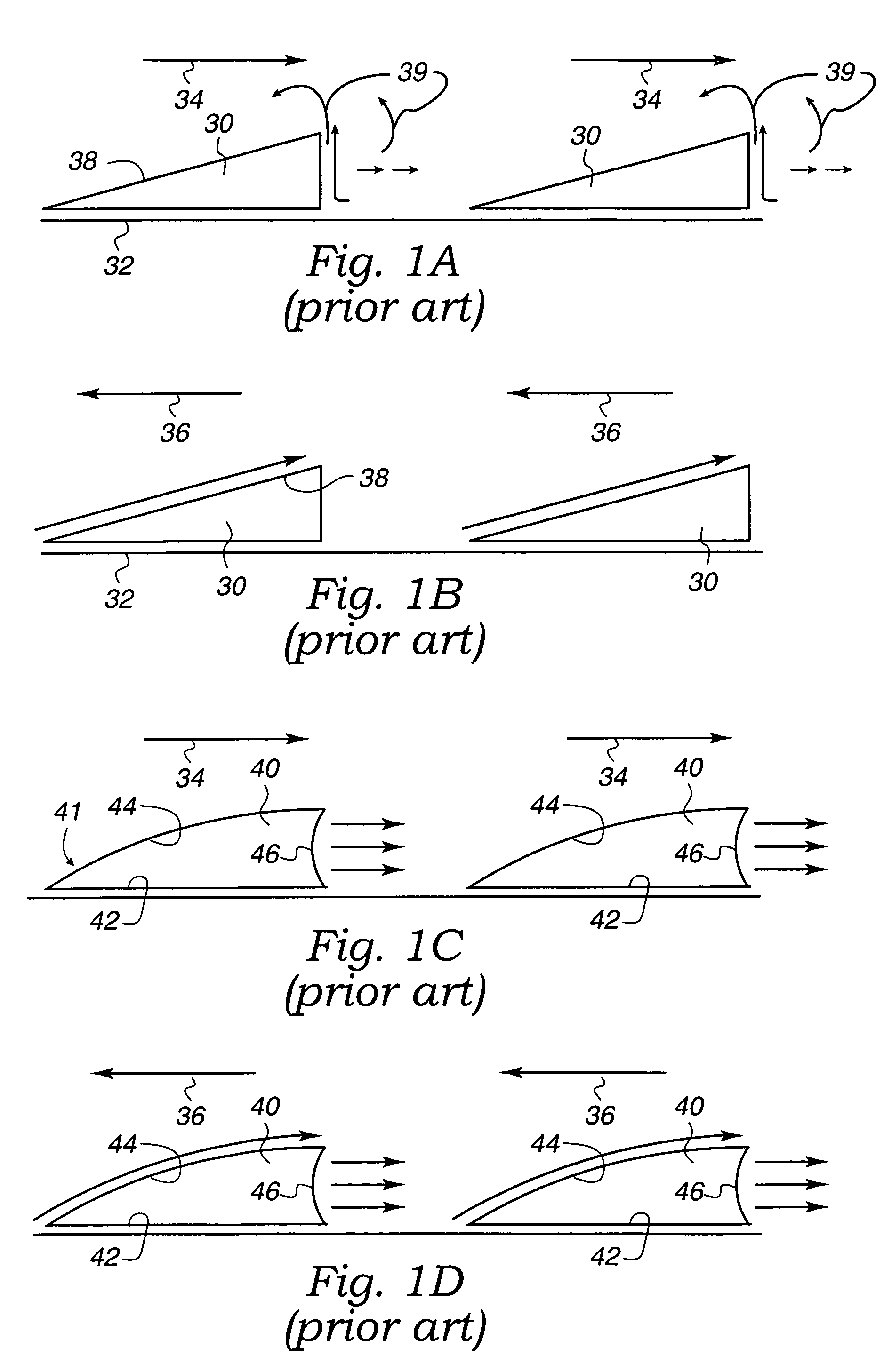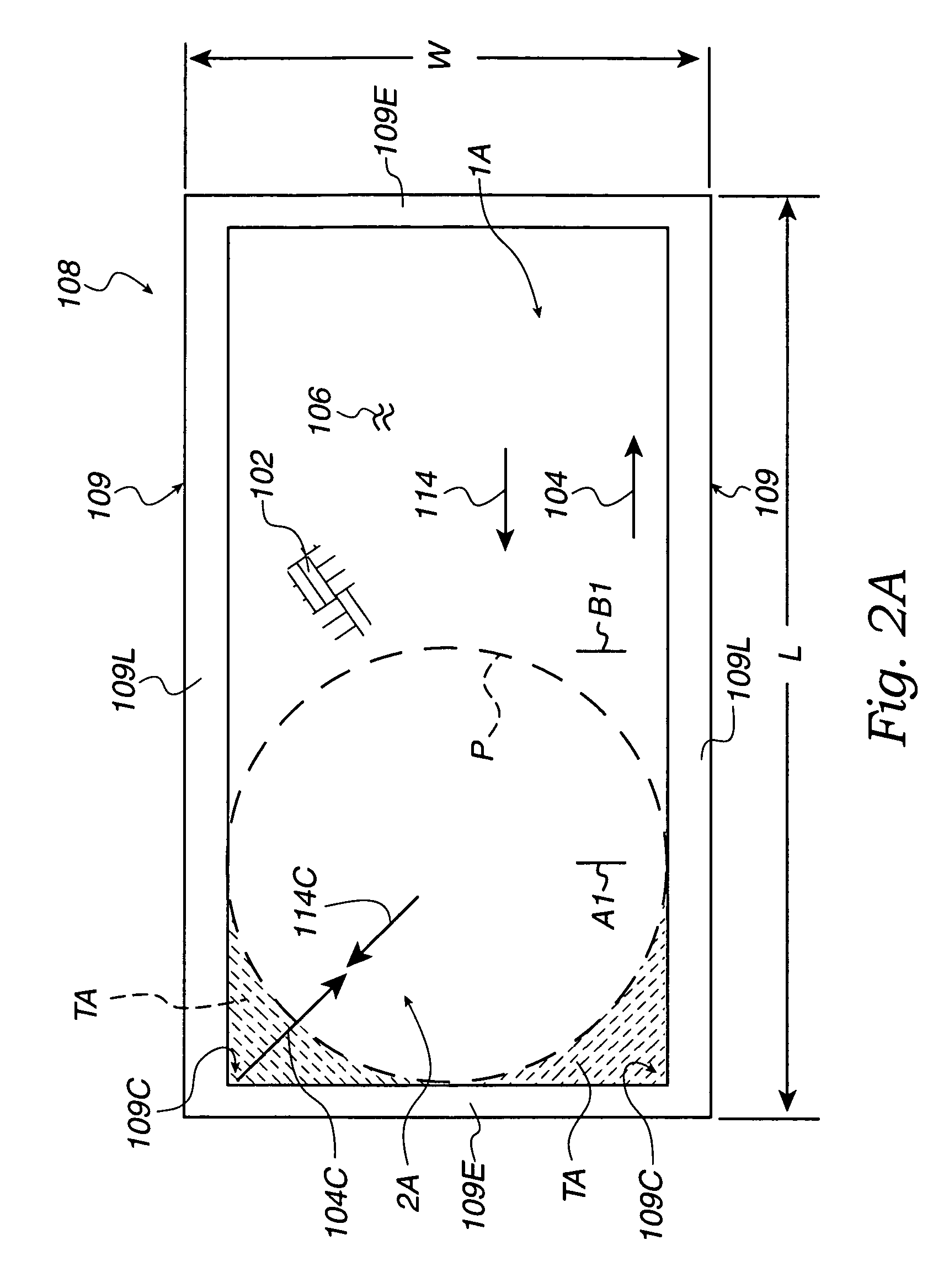Methods of and sludge collector with adjacent opposed oppositely-moving blades for moving sludge in a basin
a technology of sludge collector and basin, which is applied in the direction of liquid displacement, separation process, transportation and packaging, etc., can solve the problems of reducing the efficiency of the desired movement, increasing the cost and weight, and the basin present a problem, and achieves high resistance to both tension and compressive for
- Summary
- Abstract
- Description
- Claims
- Application Information
AI Technical Summary
Benefits of technology
Problems solved by technology
Method used
Image
Examples
Embodiment Construction
[0038]Referring now to FIGS. 2A and 2B, embodiments 100 of the present invention may move material 102 in a first (or “to”) direction (see arrow 104) relative to a bottom (or floor) 106 of a basin 108. The first direction is a desired direction of material movement. The basin 108 may be a container or tank provided with walls, e.g., four walls 109. The walls 109 may include two walls, a side wall 109L and an end wall 109E, that are adjacent to each other and that define a corner 109C (FIG. 2A) of the basin 108. The corner 109C is where the two walls 109L and 109E intersect, and may extend vertically, for example.
[0039]The basin 108 may contain apparatus (not shown) in which the materials 102 are collected. For example, the materials 102 may be collected by being separated from liquids (not shown) by plate or tube settlers (not shown) that promote settling of the material 102 to the bottom 106 of the basin 108. The apparatus may also be a flocculator (not shown) in which the material...
PUM
| Property | Measurement | Unit |
|---|---|---|
| distance | aaaaa | aaaaa |
| distance | aaaaa | aaaaa |
| depth | aaaaa | aaaaa |
Abstract
Description
Claims
Application Information
 Login to View More
Login to View More - R&D
- Intellectual Property
- Life Sciences
- Materials
- Tech Scout
- Unparalleled Data Quality
- Higher Quality Content
- 60% Fewer Hallucinations
Browse by: Latest US Patents, China's latest patents, Technical Efficacy Thesaurus, Application Domain, Technology Topic, Popular Technical Reports.
© 2025 PatSnap. All rights reserved.Legal|Privacy policy|Modern Slavery Act Transparency Statement|Sitemap|About US| Contact US: help@patsnap.com



